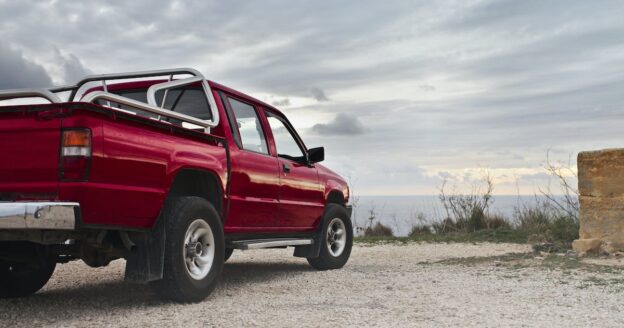Selling your car can be a rewarding experience, especially if you have your sights set on something new. The money you get from your current vehicle can help you pay for your new car, or at least be put towards a down payment and title/registration fees. However, preparing your vehicle for sale is a bit more difficult, as you’ll need to attract potential buyers and secure a fair deal.
Whether you’re considering a new, used or repossessed vehicle, let us walk you through the essential steps to getting your car ready to sell. From detailing and maintenance to paperwork and marketing strategies, every detail matters!
Clean and Detail Your Car
First impressions matter, and a clean, well-maintained car is more likely to capture the attention of potential buyers. Give your vehicle a thorough cleaning both inside and out. This may include washing and waxing the exterior, cleaning the interior, vacuuming carpets and addressing any odors.
Some sellers spend the money to get their car detailed, so you might want to look into this if your car is dirty or has odors. Car detailing prices vary depending on your location, the size of your vehicle and the condition of your vehicle, but you can expect to spend between $50 and $300.
Conduct Necessary Repairs
Addressing minor repairs and maintenance issues can significantly enhance your car’s appeal. From changing fluids and replacing worn-out parts to fixing dents and scratches, a well-maintained car signals to buyers that it has been cared for and is in good condition.
You don’t need to go overboard with repairs since you will be selling the vehicle as-is, but it’s still important to address major issues. And, make sure that you are honest with potential buyers about repairs that will need to be made in the near future.
Gather and Organize Maintenance Records
Buyers appreciate transparency when it comes to a vehicle’s maintenance history. Compile and organize all relevant maintenance records, including receipts for recent repairs, oil changes and other services. Presenting a comprehensive history can build trust with potential buyers and allow them to pick up with the appropriate maintenance.
Determine the Market Value
Research the current market value of your car to establish a competitive and realistic selling price. Online tools and vehicle valuation websites can provide insights into the fair market value based on factors such as make, model, year, mileage and overall condition. Be willing to negotiate as well.
Take High-Quality Photos
Quality photos are essential for creating an attractive online listing. Provide potential buyers with clear images that showcase your car’s exterior, interior and key features. A well-photographed listing can significantly increase the chances of generating interest. Most people do their car shopping online and rely on pictures and videos.
Create a Compelling Listing
Craft a detailed and honest description of your car for the online listing. Highlight key features, recent maintenance and any unique selling points. Be transparent about the vehicle’s condition and any issues it may have. A well-written listing will not only attract serious buyers but also the right buyers.
Advertise Effectively
Choose the right platforms to advertise your car. Online classifieds, automotive marketplaces and social media can be effective channels. Many people start with social media because it’s free and can reach a wide range of people, particularly in your local area. Be sure to include a compelling headline, detailed description and high-quality photos.
Get a Pre-Sale Inspection
Consider getting a pre-sale inspection from a trusted mechanic. This not only provides potential buyers with confidence in the vehicle’s condition but also allows you to address any last-minute issues that may arise during the selling process.
Prepare Necessary Documents
Gather all necessary paperwork, including the title, maintenance records and a bill of sale. Ensure that you have all required documents ready for a smooth and legal transaction. Check with your local Department of Motor Vehicles (DMV) for specific requirements in your area.
Collect Your Funds
For safety reasons, we recommend completing a car transaction in a public place. Using cash is the most straightforward way to handle the transaction, but it can also be risky. Also, keep in mind that the IRS requires disclosure when sales top $10,000.
Other ways to accept money for your vehicle include a bank transfer, certified check, cashier’s check or digital payment service. Once you have this money, you can use it to help pay for your next vehicle!
Shop for Repossessed Vehicles in Your Area
By following these steps, you can ensure that your car is well-prepared for sale, attracting serious buyers and facilitating a smooth selling process. And, once you sell your vehicle, you can start shopping for a new one!
At RepoFinder, you can buy repossessions directly from local banks and credit unions. Repo vehicles are priced to sell, and banks and credit unions are highly motivated, which means you may be able to negotiate an even lower offer. Visit us today and browse our featured vehicles!











